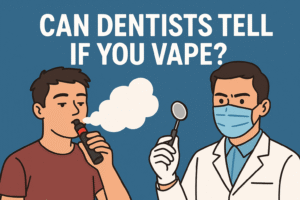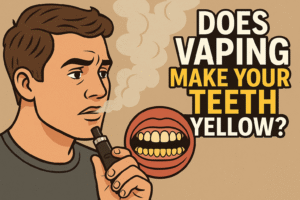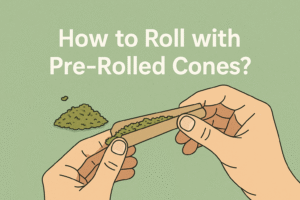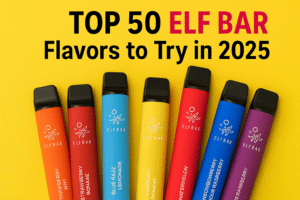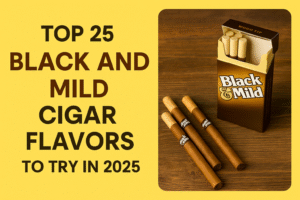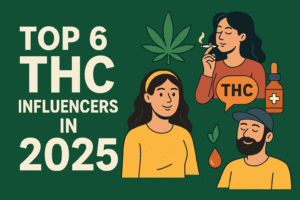
Tetrahydrocannabinolic Acid (THCA), often gets overshadowed by its derivative THC (Tetrahydrocannabinol), resides at the heart of several misconceptions. People misinterpret its psychoactive nature, medicinal potential, and exclusivity to cannabis, which has obscured its true nature due to THCA myths circulated in the news.
THCA, found in raw cannabis, undergoes heat activation, a process pivotal in unlocking its psychoactive properties. However, THCA itself remains non-psychoactive, prompting exploration into its distinct therapeutic benefits.
In the past few years, several THCA products have gained popularity among the masses. With the expanding landscape of Cannabis, people have finally understood
Top THCA Myths to Know in 2025
Let’s talk about all the THCA myths one by one, most easily and simply.
1. Myth 1: THCA is Psychoactive
Reality: THCA is an acidic precursor to THC. It doesn’t exhibit psychoactive properties on its own. It’s abundant in raw, unheated cannabis. When exposed to heat through processes like smoking, vaping, or cooking, THCA undergoes decarboxylation, converting into THC, the well-known psychoactive cannabinoid responsible for the high associated with cannabis consumption. This transformation is pivotal in activating the psychoactive effects, making THCA distinct in its non-intoxicating nature.
2. Myth 2: THCA Has No Medicinal Value
Reality: Research conducted on animals indicates the anti-inflammatory properties of THCA. Studies have found that THCA has a huge potential in aiding conditions like arthritis or autoimmune diseases. Its neuroprotective attributes have also shown promise in protecting against neurodegenerative diseases like Parkinson’s and Alzheimer’s.
Additionally, THCA’s antiemetic effects might offer relief for nausea and vomiting, often experienced during chemotherapy. However, more clinical trials are necessary to validate these early findings.
3. Myth 3: THCA Is Only Present in Cannabis
Reality: While THCA is primarily found in cannabis, particularly in the raw plant material, it’s not exclusive to this species. Trace amounts of THCA have been identified in hemp, a variety of the Cannabis sativa plant with low THC content. Moreover, some raw vegetables like parsley, broccoli, and certain fruits contain minuscule quantities of THCA. This broader presence hints at the compound’s existence beyond the cannabis plant, albeit in smaller concentrations.
Myth 4: THCA is Useless Unless Converted to THC
Reality: While THC is the sought-after compound for its psychoactive effects, THCA holds value in its own right. Some individuals prefer consuming THCA specifically for its purported medicinal properties without experiencing the high associated with THC. Moreover, THCA-rich products are gaining popularity for potential therapeutic benefits, catering to those seeking cannabinoid therapy without psychoactive effects.
Myth 5: THCA and CBD Have Identical Effects
Reality: THCA and CBD are distinct cannabinoids with different mechanisms of action. CBD interacts with various receptors in the endocannabinoid system, contributing to its anti-inflammatory, analgesic, and anxiolytic effects. On the other hand, THCA’s mechanisms and potential impacts are still under research. While both are non-psychoactive, their specific effects and applications differ, leading to their unique roles in potential therapeutic interventions.
Myth 6: THCA Doesn’t Require Heat Activation
Reality: THCA needs heat to undergo decarboxylation to convert into THC, a process that activates its psychoactive properties. Without this activation, THCA remains non-psychoactive. Methods involving heat, such as cooking or vaporization, are necessary to convert THCA into THC, enabling its psychoactive effects.
Myth 7: THCA Has No Potential for Commercial Use
Reality: Growing interest in cannabis and its compounds for medicinal and wellness purposes has sparked exploration into THCA’s commercial potential. Some companies are investigating methods to preserve THCA in products, preventing its conversion to THC. This opens doors for non-psychoactive cannabinoid consumption in various products like beverages, edibles, and topicals, catering to consumers seeking therapeutic benefits without the psychoactive effects of THC.

Conclusion
THCA stands distinct from its psychoactive counterpart THC, offering a non-intoxicating alternative while harboring potential therapeutic benefits. Its presence extends beyond cannabis, hinting at a broader spectrum of natural sources. As research progresses, THCA’s medicinal applications gain traction, illuminating possibilities for conditions ranging from inflammation to neurodegenerative diseases.
Moreover, its commercial potential expands horizons, presenting avenues for non-psychoactive cannabinoid consumption. Appreciating THCA’s role demands a shift from misconceptions to informed perspectives, acknowledging its non-psychoactive stance, unique medicinal potential, and broader natural presence. Embracing these realities opens doors to diverse applications in healthcare, wellness, and industry, fostering a more comprehensive utilization of this intriguing compound in the ever-evolving landscape of cannabis exploration.

